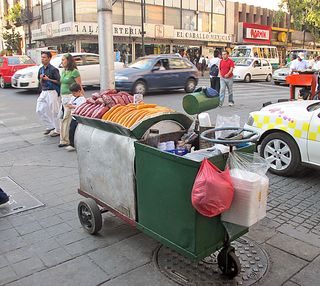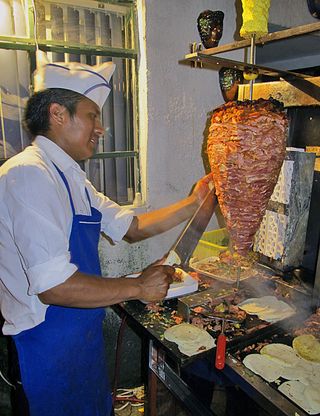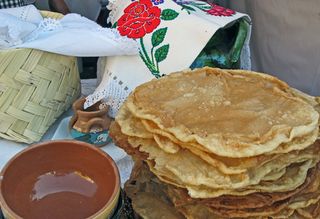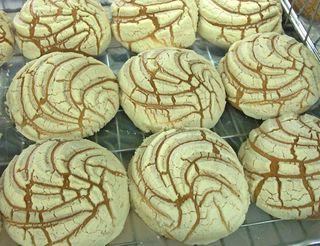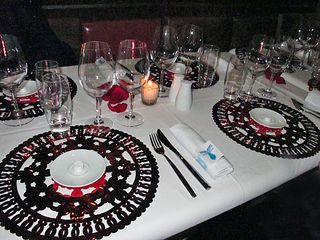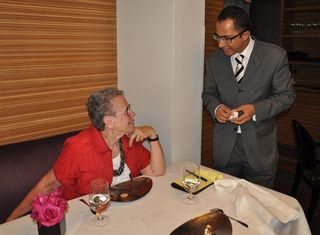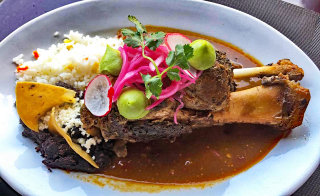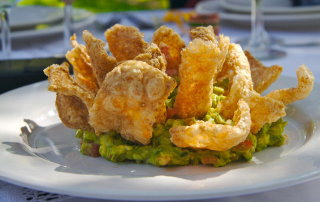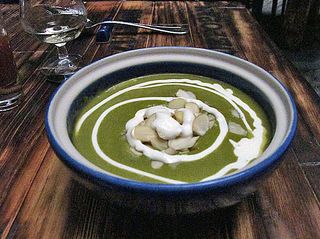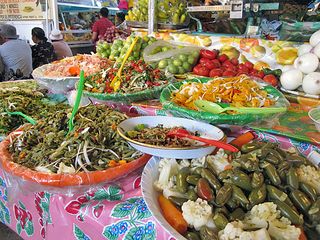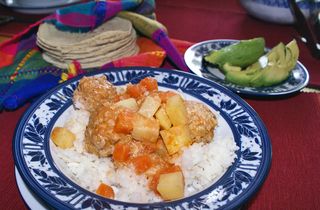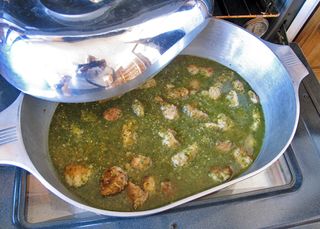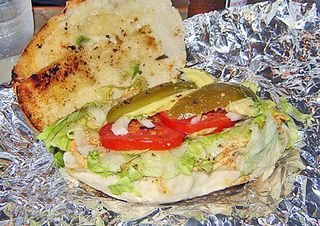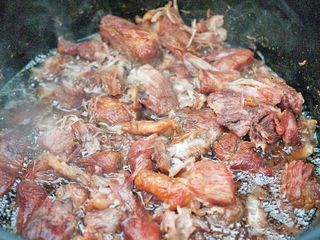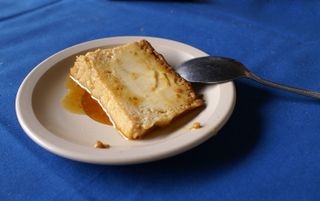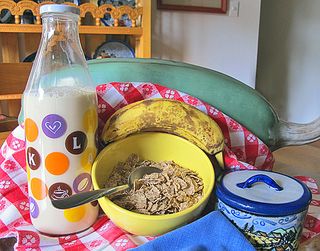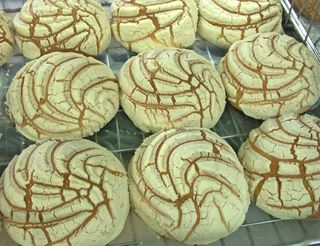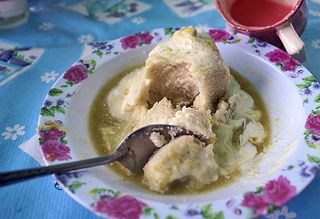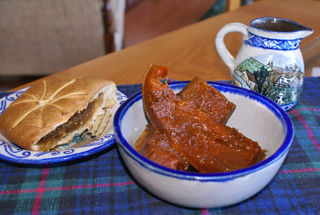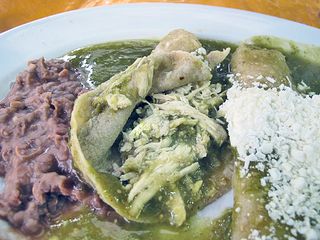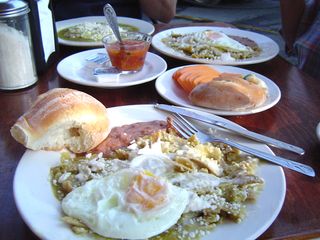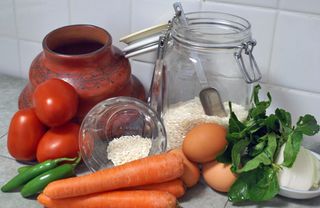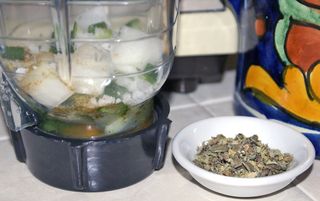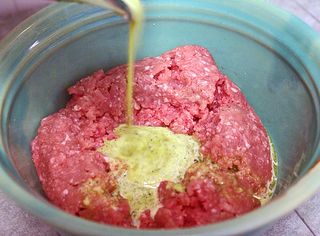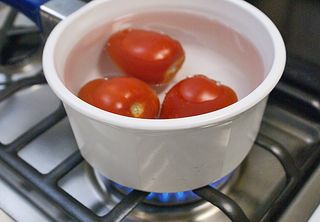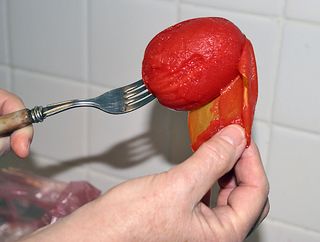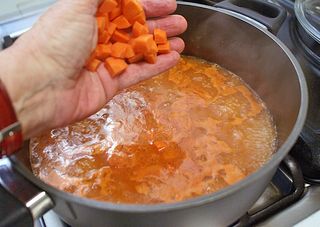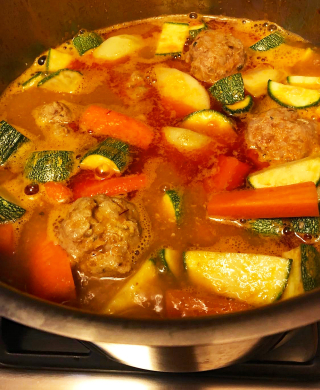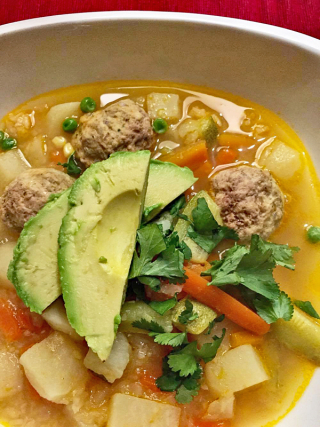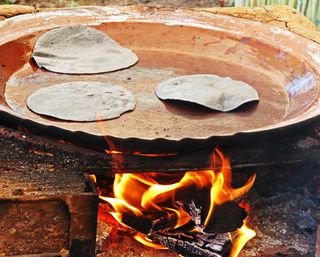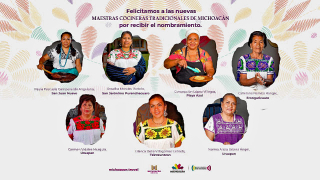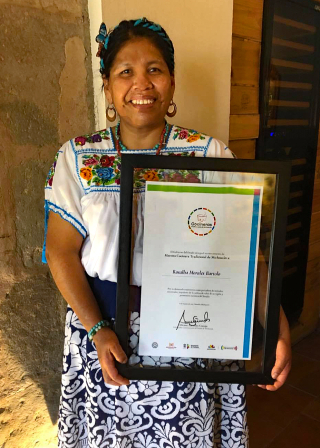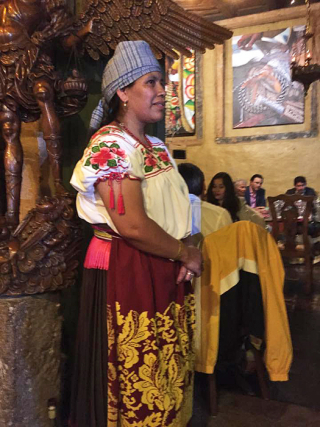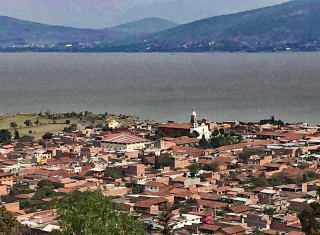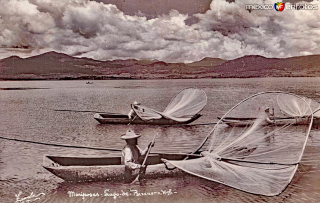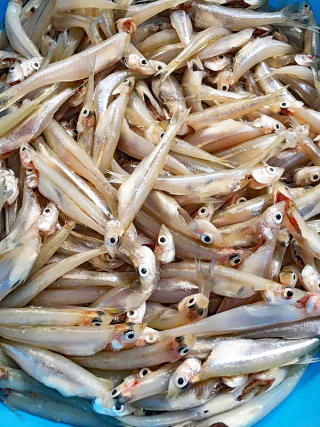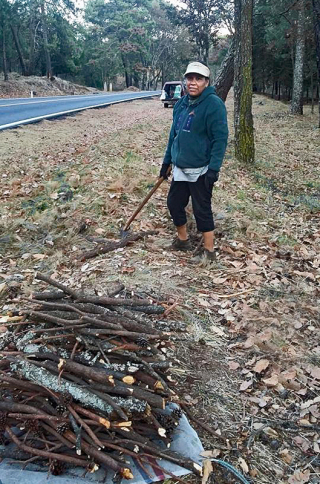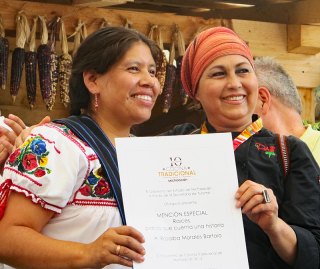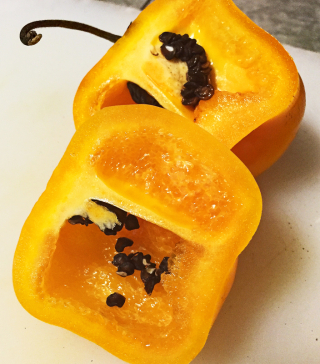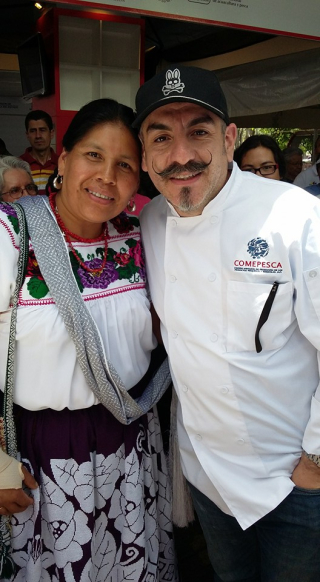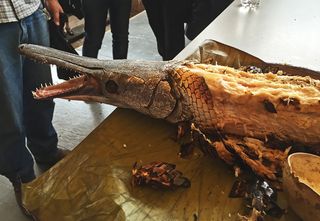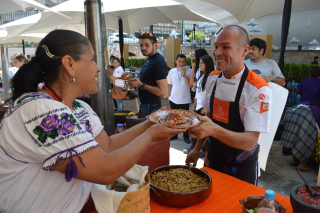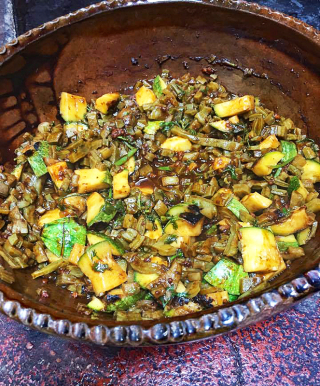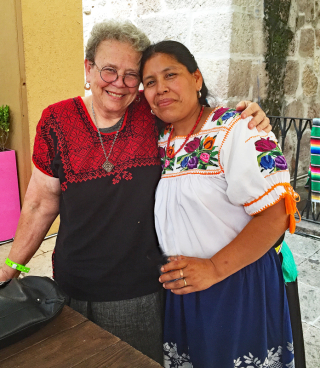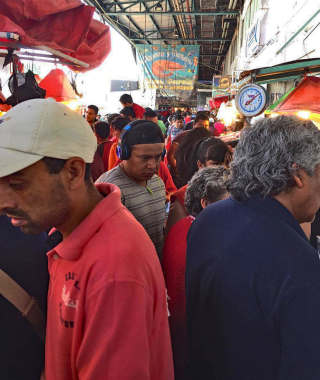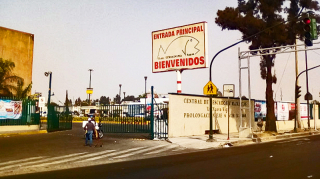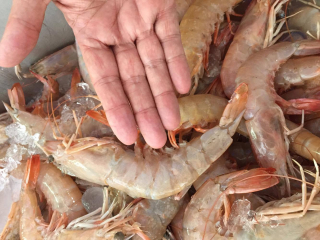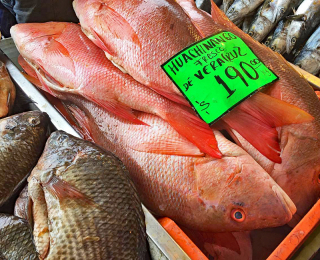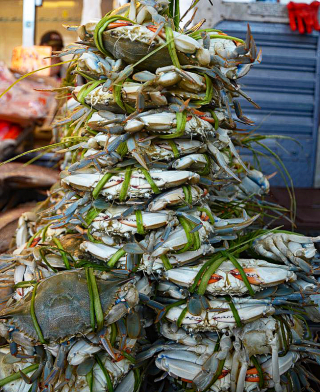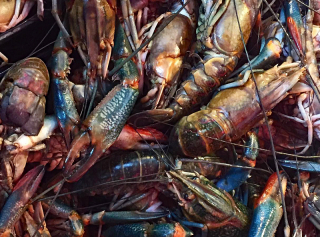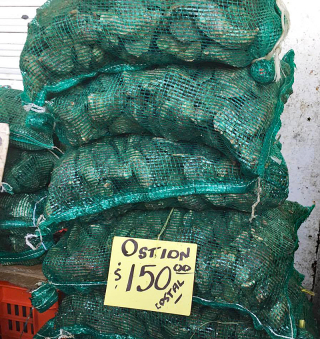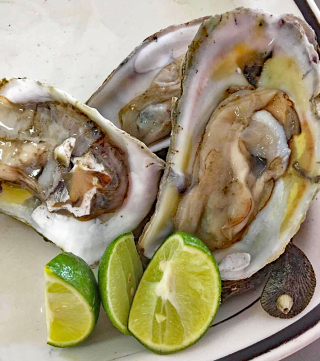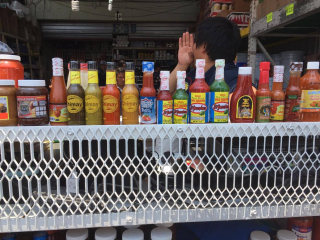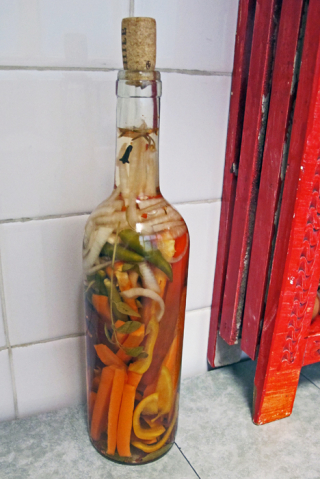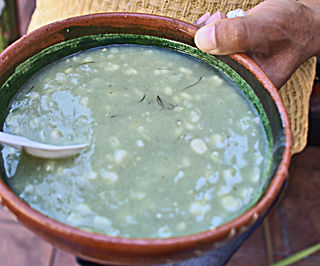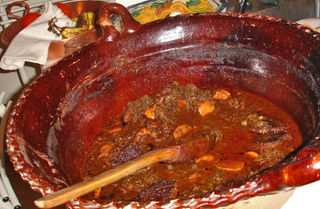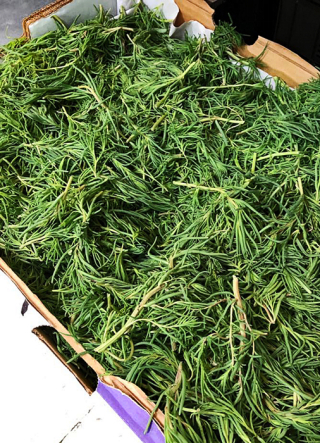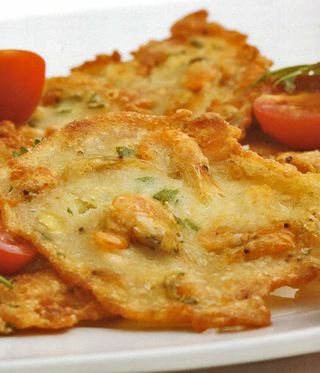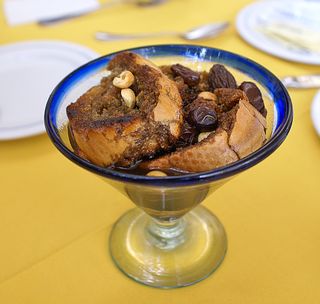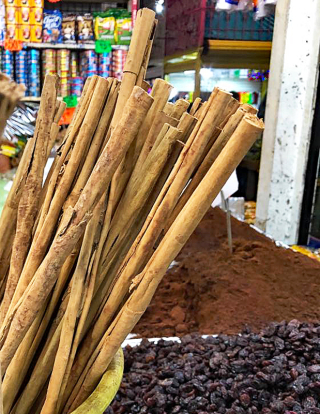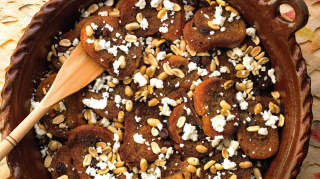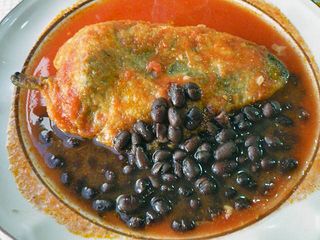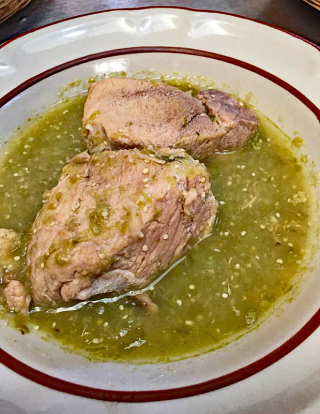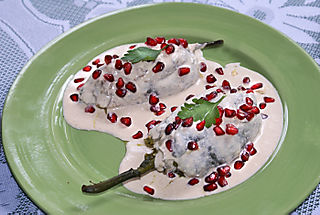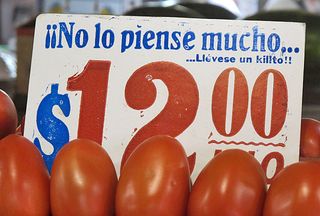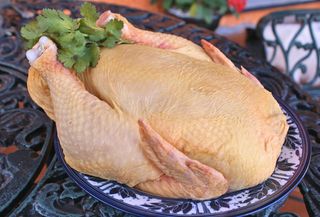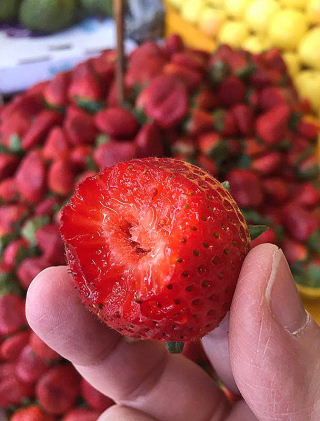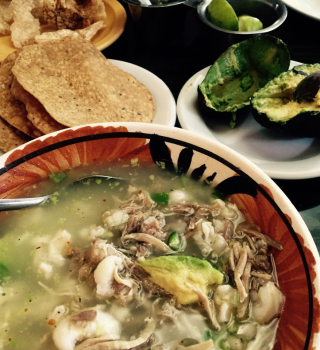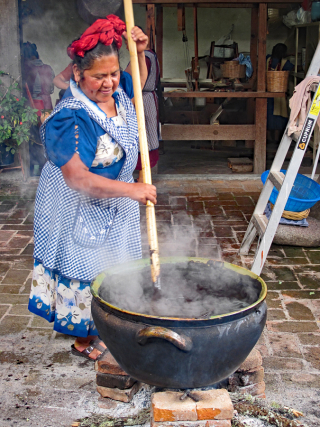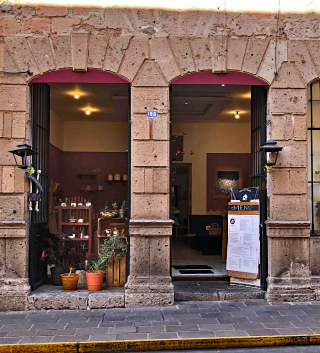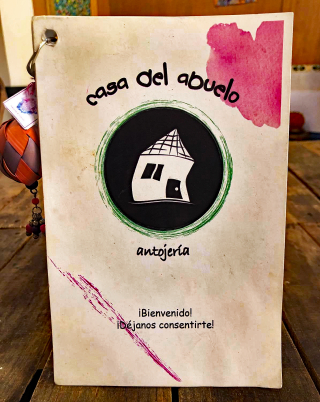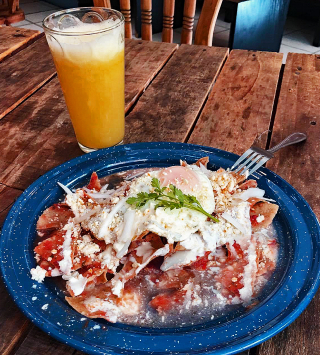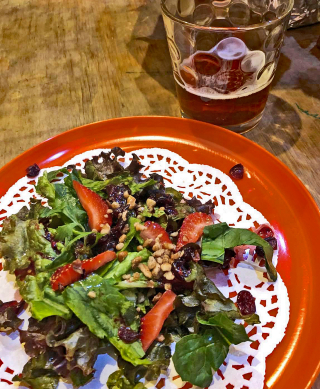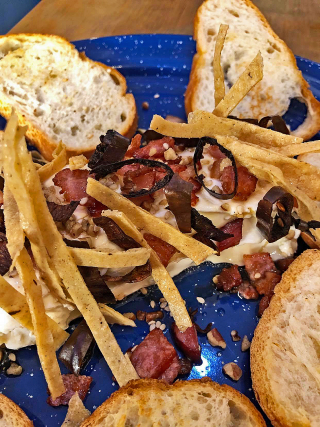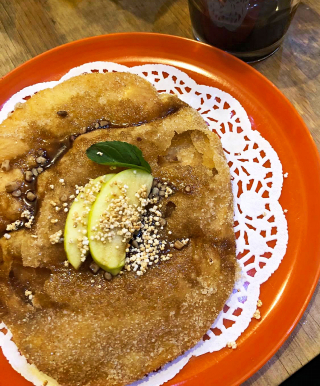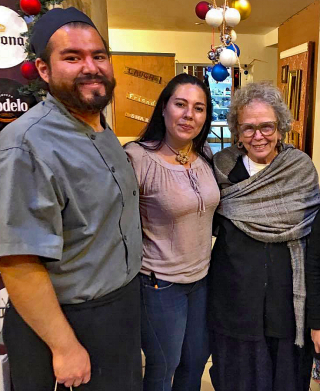This delicious recipe for picadillo (pee-kah-DEE-yoh, a kind of Mexican hash) has been a staple in my Mexican home-cooking repertoire for nearly 50 years. A week or so ago, I was shocked to realize that I could not remember the last time I prepared it! What in the world had I been thinking? There is nothing that says 'comfort food' to me as loudly as this simple recipe. You and your family or guests will love it.

Elisabeth Lambert Ortiz (1915-2003), a proper British woman married to Mexican diplomat César Ortiz Tinoco, learned Mexican cuisine in Mexico City, her husband's home town. She published her wonderful The Complete Book of Mexican Cooking in 1967, which introduced the English-speaking world to some of the all but unknown regional cuisines of Mexico. I've cooked from this ever more raggedy, taped-together, yellowing, food-stained, still-magical paperback edition since the middle 1970s, starting several years before I moved to Mexico. The first truly Mexican recipe I ever prepared was picadillo, from Elisabeth Lambert Ortiz's book. It's Ortiz's version of Mexico's traditional home-style hash, and it made quite the hit with my guests, who had never heard of it prior to snarfing it down and asking for seconds at my table. If you've never heard of it, make it as soon as you can!

When I first started making this dish in the United States, some of the ingredients were hard to source. Today, nearly 45 years later, the ingredients for picadillo are easily available in almost any supermarket. Starting with the bowl of ground pork at about seven o'clock in the photograph and moving clockwise, you see the raw meat, Mexican cinnamon sticks, bright orange carrots all but hidden in the dish, chiles serrano, Roma tomatoes, white potatoes, a Red Delicious apple, raisins and dried cranberries, freshly dried hoja de laurel (bay leaves), a whole white onion, and, in the little dish in the right-center foreground, home-dried Mexican oregano. I dried the bay leaves and the oregano myself, but you can make substitutions: use ground cinnamon rather than the cinnamon sticks, store-bought bay leaves, and the oregano you normally use instead of the Mexican type; the rest of the ingredients are commonplace.
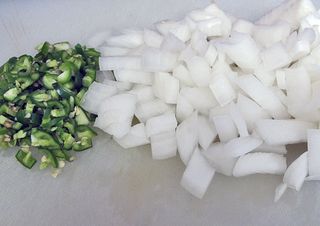
Minced chile serrano and diced white onion.
Hash of all kinds is one of the most comfortable of comfort foods, and the hash called picadillo (the word means 'a little something chopped-up') is simply Mexico's slightly more rambunctious cousin. This picadillo recipe is always forgiving, always flexible. Prepare it with ground beef, ground pork, or a combination of the two meats. Use more potatoes, fewer carrots, an extra tomato (or two, if the ones you have are quite small). Want more picante (spiciness)? Add more minced chile serrano. Don't care for olives? Leave them out. But by all means do try picadillo: it's a far cry from your mother's canned corned beef hash.

More ready-to-cook raw ingredients, left to right: diced tomatoes; peeled, peeled, diced apple; peeled, diced carrots. For size comparison's sake, the knife blade is 10.5" long.
Ingredients
1 kilo (2.2 lbs) ground pork, ground beef, or a combination of the two
3 large, ripe Roma tomatoes, diced
3 fresh chiles serrano, minced (Use less chile if your tolerance for picante (spiciness) is low, more if you want more spice.)
2 large cloves garlic, minced
2 medium-large white onions, peeled and diced
4 medium carrots, peeled and diced
1 or 2 large Red Delicious apples OR 1 or 2 large, ripe Bartlett pears OR one of each, peeled and diced
4 medium white potatoes, peeled and diced
1 cup large green olives, with or without pimento, sliced
3/4 cup raisins, dried cranberries, or a combination of both
1 tsp dried oregano, Mexican if you have it
3 large bay leaves
2" piece of Mexican cinnamon stick OR big pinch of ground cinnamon
Freshly rendered pork lard OR vegetable oil, as needed. I'm a lard person, myself.
Sea salt to taste
Beef, chicken, or pork stock, tomato purée, or water, as needed

Sliced large green pimento-stuffed olives. Each of these olives measures a bit more than one inch long prior to slicing. Slice them in thirds or quarters.
Equipment
A large pot with a cover. For this quantity of picadillo, I use a shallow 4-quart enameled casserole.
Cutting board
Sharp knife
Large wooden spoon
Preparation
Heat 3 Tbsp lard or vegetable oil in your cooking pot until it shimmers. Add the onion and chile and sauté over medium fire until the onion is translucent. Add the ground meat and continue to sauté over medium fire until the meat is no longer pink. Break the meat into bite-size chunks as it sautés. Add the rest of the ingredients.
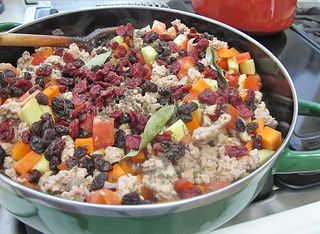
After sautéeing the onion, chile, and meat, add the rest of the solid ingredients to the pot and stir to incorporate them all. T
hen add stock, tomato purée, or water; the liquid should come to about 1/3 of the way up from the bottom of the pot. In this instance, I used a combination of tomato purée and water. Enlarge any photo for a bigger view; you'll be able to see that I used a combination of raisins and dried cranberries. I had about a quarter cup of dried cranberries on hand; a neighbor loaned me the raisins to make up the difference in measurement. The section at the bottom of the photo is blurred due to rising steam.
Cover the pot, leaving the cover just slightly ajar. Lower the heat to its lowest. Set your kitchen timer for 30 minutes and go read your email, walk the dog, or look at Facebook! When the timer rings, check the pot for liquid. If the picadillo has absorbed most of the original liquid, add the same amount again. With the cover ajar, continue to cook over a very low flame for another 30 minutes and correct for salt. Voilà! It's picadillo, ready to serve! I made a pot of picadillo this past Sunday, and it's as good as it always has been.
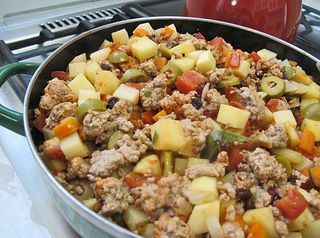
Picadillo, ready to serve after an hour's cooking. This amount of picadillo will serve 6 to 8 hungry people when served over steamed white rice or Mexican red rice. I like to prepare the picadillo recipe, serve it as a main meal, and save the rest to re-heat and serve the next day. If anything, it is even better after a night's rest–but then, aren't we all? After the second day, whatever picadillo is left freezes beautifully.

Delicious, just-right spicy picadillo, served over rice. You and your family will love this traditional Mexican meal. By all means let me know how it goes over at your house. A huge thank you to Elisabeth Lambert Ortiz, hasta donde tú estés (wherever you might be–the hope, of course, being Heaven).
Provecho! (Good eating!)
Looking for a tailored-to-your-interests specialized tour in Mexico? Click here: Tours.
